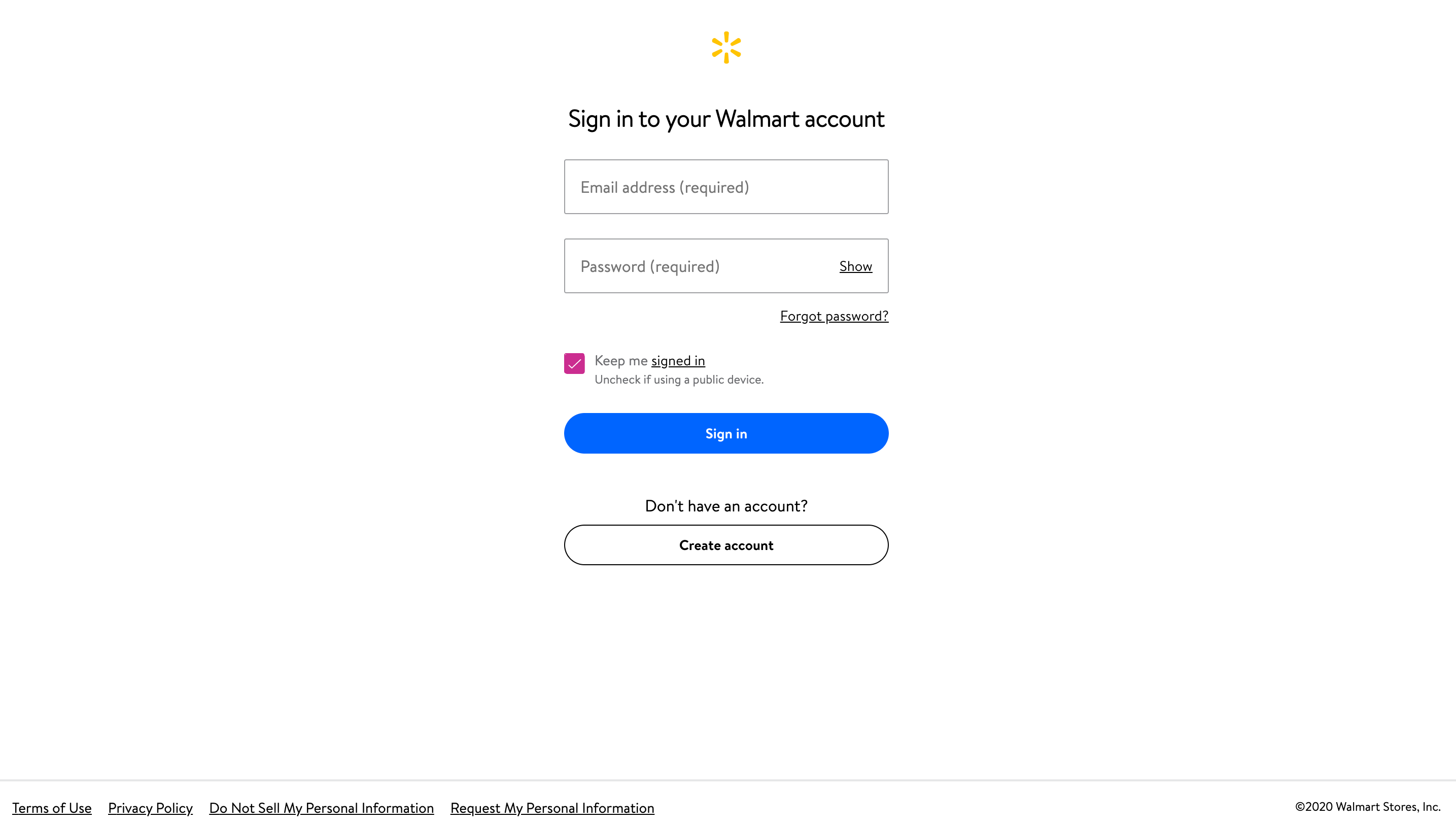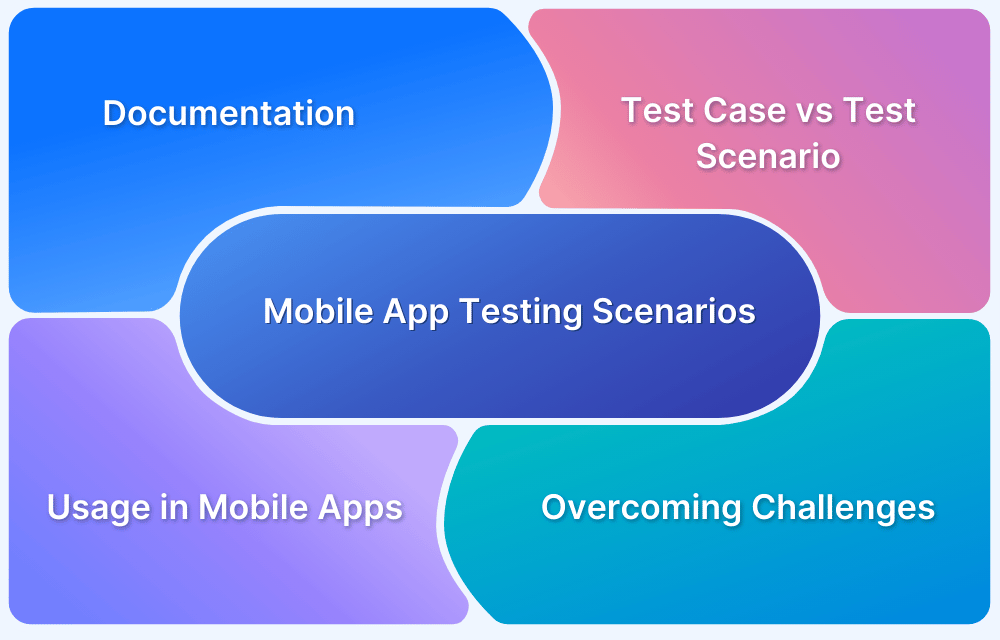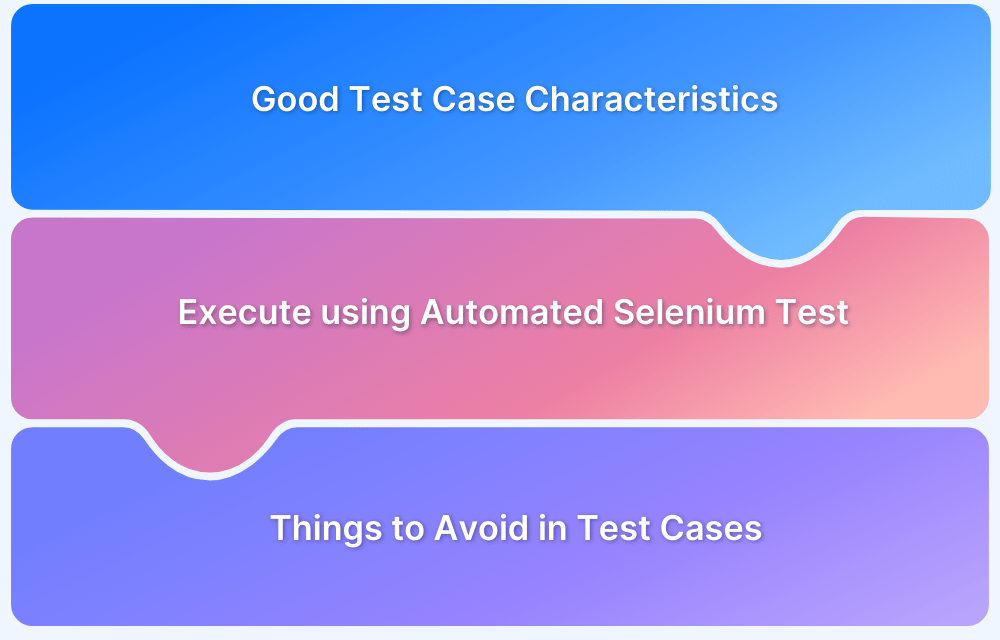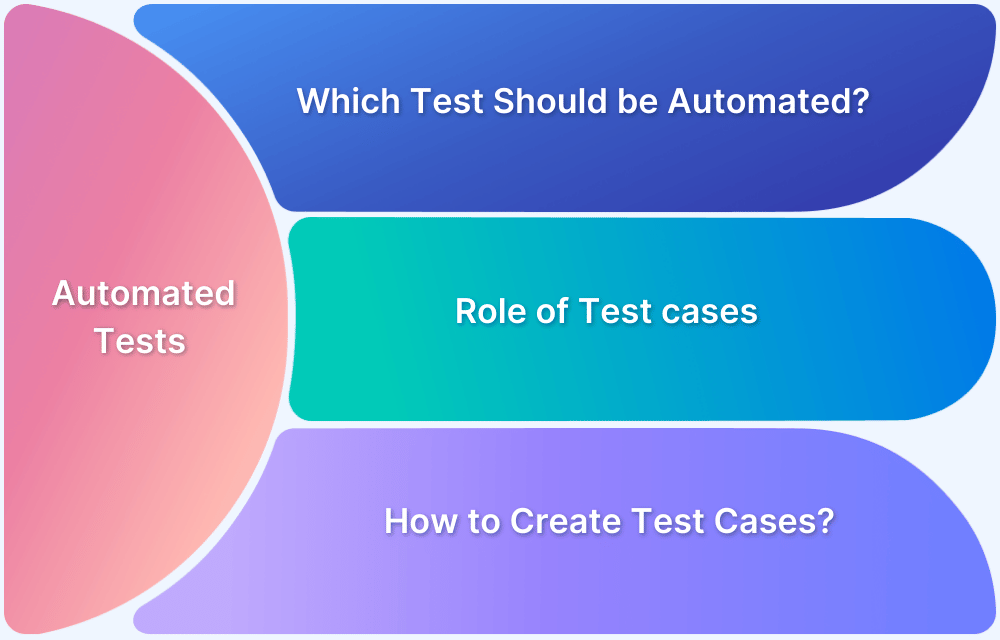Are you struggling with unclear or incomplete test scenarios? 56% of QA teams report that poorly defined test scenarios lead to missed defects and unnecessary rework.
Great testing starts with well-crafted test scenarios—they act as your blueprint for success, catching issues early, reducing ambiguity, and keeping your team on track.
This guide shows you how to create clear, effective test scenarios that improve coverage and drive better results.
What is a Test Scenario?
A Test Scenario is a high-level description of a functionality or feature to be tested, outlining the conditions under which the test will be performed. It focuses on what to test rather than how to test, serving as a guide for test case creation and ensuring comprehensive coverage of the application.
Test Scenarios are created to ensure that every functionality a website or app offers is working as expected. It is best to gather input from clients, stakeholders, and developers to create real/accurate test scenarios. This helps effectively cover all possible user scenarios and enables comprehensive testing of all business flows of the software in question.
Test Scenarios are required to verify the entire system’s performance from the users’ perspective. When creating them, testers need to place themselves in the users’ shoes to clarify what real-world scenarios the software will have to handle when made public.
Why create Test Scenarios?
- It helps ensure complete test coverage
- Since test scenarios must ideally be approved by business analysts, developers, and potential customers (a control group, ideally), they would cover everything that needs to be tested before the software goes public.
- It helps estimate the required testing effort and organize the testing process. It can also serve as a proposal for the client.
- It helps identify the most critical end-to-end user flows, which assists with organizing the testing efforts according to priority
Read More: End To End Testing: A Detailed Guide
When Not to use Test Scenarios?
It is not necessary to create and use Test Scenarios in the following situations:
- In case of a time crunch or when testing an unstable website or app. Creating detailed test scenarios takes time, and creating them for unstable software makes no sense because they will change as the software stabilizes.
- When a project follows the Agile methodology of development.
- When implementing a bug fix or regression tests. If this occurs, there will already be existing documentation from previous test cycles that can be used.
How to create a Test Scenario?
Following is the step by step guide to create a test scenario:
Step 1: Understand the Requirements
- Review the functional specifications, user stories, or business requirements.
- Identify the features or modules that need testing.
Step 2: Identify Key Functionalities
- Break down the application into major functionalities.
- Focus on the primary features or areas that need validation.
Step 3: Define Objectives
- For each feature or module, clearly state the objective of the test scenario.
- Focus on what functionality or behavior needs to be tested.
Step 4: Consider User Perspectives
- Think about different use cases from the end-user’s point of view.
- Consider positive tests, negative tests, and edge cases to ensure comprehensive coverage.
Step 5: Outline Preconditions
- Define any preconditions or setup required before the test scenario can be executed. (e.g., a user needs to be logged in, data needs to be initialized, etc.)
Step 6: Describe the Actions
- Provide a clear and concise description of the action or event that will trigger the scenario. (e.g., “Add a product to the shopping cart.”)
Step 7: Define the Expected Outcome
- Clearly outline the expected behavior or result after executing the scenario. (e.g., “The product should appear in the cart with correct details.”)
Step 8: Prioritize Scenarios
- Based on criticality or risk, prioritize the test scenarios.
- Ensure critical features are tested first to avoid missing important functionality.
Creating a test scenario helps ensure that software functions as expected by outlining conditions, inputs, and expected outcomes. It provides clarity on what to validate, leading to better test coverage and more efficient testing.
For refined test scenario creation and best practices, BrowserStack experts can offer valuable insights and guidance.
Creating test scenarios ensures software functions as expected, improving coverage and efficiency, and experts at BrowserStack can guide you with best practices for optimal results
Get Expert QA Guidance Today
Schedule a call with BrowserStack QA specialists to discuss your testing challenges, automation strategies, and tool integrations. Gain actionable insights tailored to your projects and ensure faster, more reliable software delivery.
Test Scenario Examples
Look at an e-commerce website and a test scenario related to its Login page.
Test Scenario 1
Check the Login functionality.

Ask the following questions in this scenario:
- Can the user log in with a valid email id and password?
- What happens when an invalid email id and valid password?
- What happens when a valid email id and an invalid password are entered?
- What happens when an invalid email id and invalid password are entered?
- What happens when the email id and password fields are blank and the Login button is clicked?
- Is the Forgot password? Is the option working as expected?
- Is every link on the page functioning as expected?
Let’s also look at a detailed example of test scenarios for a food delivery app:
1. User registration
- Verify that users can successfully create a new account with valid credentials.
- Verify that users cannot create an account with invalid or duplicate credentials.
- Verify that users are redirected to the correct page after a successful registration.
2. Ordering food
- Verify that users can add items to their cart and proceed to checkout.
- Verify that the app displays the total cost of the order, including taxes and fees.
- Verify that users can modify or cancel their order before it is placed.
- Verify that users receive an order confirmation and estimated delivery time (ETA).
3. Delivery tracking
- Verify that users can track the status of their order, from preparation to delivery.
- Verify that the app displays the driver’s location and estimated arrival time.
- Verify that users can contact the driver or restaurant for any issues with the order.
4. Payment processing
- Verify that users can add and manage their payment methods securely.
- Verify that the app processes payments correctly and provides a receipt.
- Verify that users can dispute any unauthorized charges or errors in their payment history.
5. User Feedback
- Verify that users can rate and review restaurants and delivery partners.
- Verify that the app displays the average rating and reviews for each restaurant.
- Verify that users can report any issues with their order, such as missing or incorrect items.
These scenarios cover the main features and functions of a food delivery app and ensure that the app is functional, reliable, and user-friendly. The test scenario should help testers check for every possible user action and ensure that every step yields the expected result. After every test scenario is implemented, testers should be able to confidently say that they can answer every single question about that particular feature or function.
Best Practices to Create Test Scenarios
Crafting effective test scenarios is essential for ensuring software quality and reliability. Here are some best practices to follow for thorough application testing:
- Understand the Requirements: Before writing test scenarios, gain a comprehensive understanding of the software requirements. This ensures your scenarios encompass all necessary functionalities and user stories.
- Define Clear Objectives: Each test scenario should have a specific objective. Clearly state what aspect of the software is being tested, whether it’s a particular function, performance metric, or user experience feature.
- Keep Scenarios Simple and Concise: Avoid unnecessary complexity. Each scenario should be straightforward enough to understand and execute without ambiguity, making it easier to pinpoint issues if a test fails.
- Prioritize Test Scenarios: Recognize that not all scenarios carry the same weight. Prioritize them based on user impact, functionality criticality, and the likelihood of failure.
- Include Positive and Negative Test Cases: Ensure your scenarios address both positive paths (normal operating conditions) and negative paths (error conditions and edge cases).
- Ensure Reusability and Maintainability: Write test scenarios with an eye toward reusability in future testing cycles, which can save time and effort over the long term.
- Automate When Feasible: Consider automating repetitive and high-volume test scenarios to enhance efficiency and consistency in your testing processes.
- Review and Update Regularly: As the software evolves, so should your test scenarios. Regularly review and update them to keep them relevant and effective.
- Collaborate and Communicate: Foster collaboration among team members, including developers, testers, and business analysts, to create robust and effective test scenarios together.
Difference between Test Case and Test Scenario
A Test Scenario provides high-level details on what functionality to test, derived from requirements, helping testers focus on broad user stories. In contrast, a Test Case gives detailed steps, expected results, and specific actions for testing, derived from the scenario. Test scenarios outline what to test, while test cases guide how to test with precision and can be reused, especially in regression testing.
| Test Case | Test Scenario |
|---|---|
| Offers detailed information on what to test, steps required for testing, and the accurate result to be expected | Only detail information on what feature is to be tested and the user story associated with the feature. |
| Required keeping testers and developers in sync | Required so that testers know what their task is on a high level |
| It consists of low-level, individual actions testers have to undertake | Consists of high-level information (usually a one-liner) about what feature should be tested |
| It is derived from test scenarios | It is derived from the requirements document |
| Creating test cases is a one-time effort since test cases can be reused, especially during regression testing. | Test scenarios may need to be changed as the software evolves to align with newly developed features. |
| Mostly helpful for guiding individual testers on how to progress in a certain project | Most helpful in reducing complexity by listing out everything that must be tested and helping testers create test cases for each scenario |
The Role of Real Devices in Test Scenarios
Real devices are crucial for effective test scenarios, as they provide accurate insights into software performance under genuine user conditions. Testing on emulators or simulators can yield misleading results, making it difficult for QA managers to evaluate the software accurately.
Regardless of whether testing is manual or automated with tools like Selenium, a diverse device pool is essential. This should include both the latest models and older devices still in use, reflecting the fragmented landscape of user hardware. The broader the range of devices tested, the more reliable the performance insights.
For teams without an in-house device lab, cloud-based testing solutions like BrowserStack offer access to over 3500+ real browsers and devices worldwide. This enables parallel testing on its Cloud Selenium Grid, resulting in faster and more accurate outcomes.
Utilizing a real device cloud allows QA managers to optimize testing processes effectively. Test scenarios guide this robust testing cycle, ensuring comprehensive coverage and ultimately leading to successful project outcomes.
Testers can simulate real user conditions—such as varying network speeds, battery levels, and viewport sizes—enhancing the reliability of the results.
Conclusion
In conclusion, understanding and effectively creating test scenarios is vital for successful software testing. A test scenario offers a structured approach to ensure that a software application functions as intended across various conditions.
By meticulously outlining the testing process and considering different aspects of the application, test scenarios serve as a roadmap for testers, enabling them to validate the software’s functionality, reliability, and performance comprehensively.
No matter the activity, all testing operations must be executed on real devices. Test Scenarios can only be effectively implemented when corresponding tests are run in real user conditions. Running them on emulators or simulators cannot provide 100% accurate results, so testers and QA managers cannot evaluate the testing process accurately. Any results yielded from following a test scenario would be only partially correct, and therefore the results will not be a real barometer of software performance.
- Whether manual testing or automated Selenium testing, real devices are non-negotiable in the testing equation.
- The device pool for testing must include not just the latest gadgets but also older devices still active in the market.
- Since one can’t know which device will be used to access a website or app in a highly fragmented landscape, the more devices one can run tests on, the better.
- In the absence of an in-house device lab (regularly updated with new devices and maintains each of them at the highest levels of functionality), opt for cloud-based testing infrastructure.
BrowserStack provides 3500+ real browsers and devices that can be accessed for testing anywhere in the world, anytime. Run parallel tests on its Cloud Selenium Grid for faster results without compromising accuracy.
Users can sign up, select a device-browser-OS combination, and start testing for free. They can simulate user conditions such as low network and battery, changes in location (both local and global changes), and viewport sizes as well as screen resolutions.
QA managers can modulate testing processes by running tests on a real device cloud to provide the desired results. Since Test Scenarios are integral to shaping a highly functional test cycle, testers, and managers can utilize them accurately in every project to ensure their success.






